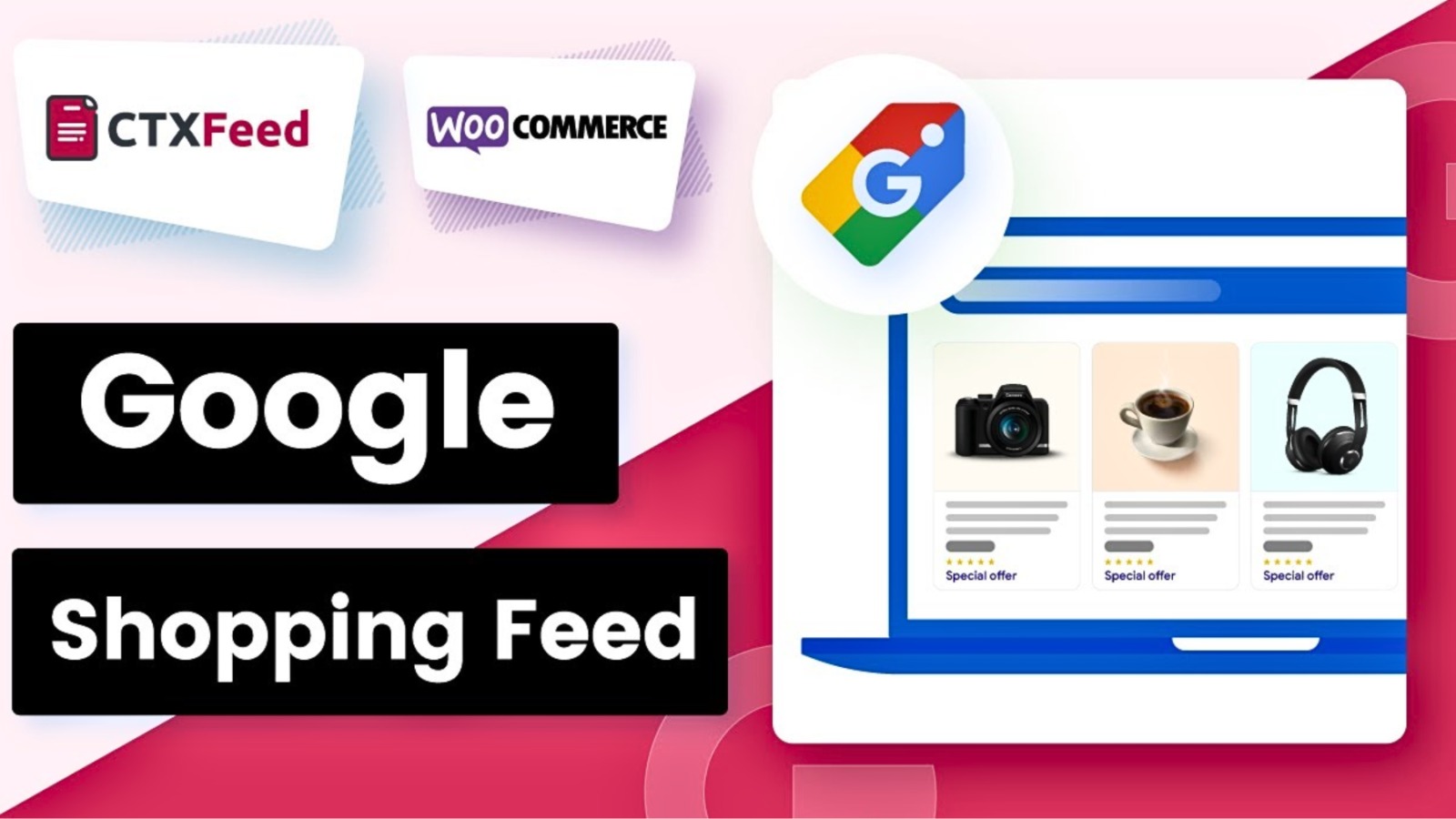
Introduction:
In the competitive world of eCommerce, your Google Shopping product feed plays a crucial role in driving traffic and sales. One of the most critical elements of your feed for Google Shopping is the product title—it’s the first thing shoppers see, and it directly impacts your click-through rate (CTR).
Whether you’re using Google Shopping Feed Shopify integrations or third-party Google Shopping apps, optimizing your product titles can significantly boost visibility and conversions. In this guide, we’ll explore proven strategies to craft high-performing titles that attract clicks and improve your Google Shopping data feeds performance.
Why Product Titles Matter in Google Shopping
Your product title is the primary factor that determines whether a shopper clicks on your listing or moves on to a competitor. Google uses this text to match user searches with relevant products, making it essential for both relevance and CTR.
A well-optimized title in your Google Shopping product feed should:
-
Include key search terms that shoppers use
-
Clearly describe the product without misleading information
-
Follow Google’s guidelines to avoid disapproval
-
Stand out from competitors while remaining concise
Poorly structured titles can lead to low visibility, fewer clicks, and lost sales. Let’s dive into how to optimize them effectively.
Google Shopping Title Requirements & Best Practices
Before optimizing, it’s important to understand Google’s requirements for product titles in your feed for Google Shopping:
-
Character Limit: Ideally under 150 characters (longer titles may get cut off)
-
No Promotional Text: Avoid words like “cheap,” “best,” or “discount”
-
Accurate & Descriptive: Must match the actual product
-
No ALL CAPS or Excessive Symbols
Best Practices for High-CTR Titles
1. Prioritize Important Keywords Early
Place the most relevant keywords at the beginning of the title. Google weighs the first words more heavily in ranking.
✅ Good: “Nike Air Max Running Shoes – Men’s Size 10 – Black”
❌ Bad: “Men’s Shoes – Nike Air Max – Running – Black – Size 10”
2. Include Key Product Attributes
Shoppers look for specific details. Incorporate:
-
Brand (e.g., Nike, Adidas)
-
Product Type (e.g., Running Shoes, Wireless Earbuds)
-
Key Features (e.g., Waterproof, Wireless, 4K)
-
Size/Color/Variant (if applicable)
Example:
“Samsung Galaxy S23 Ultra 5G – 256GB – Phantom Black – Unlocked”
3. Avoid Keyword Stuffing
While keywords are important, overloading the title makes it spammy and less readable.
✅ Good: “Apple iPhone 15 Pro – 128GB – Silver – Unlocked”
❌ Bad: “Apple iPhone 15 Pro Smartphone 128GB Silver Unlocked 5G OLED Super Retina XDR”
4. Match User Search Intent
Think about how shoppers search for your product. Use tools like Google Keyword Planner or SEMrush to find high-volume terms.
Example for a backpack:
“SwissGear Travel Backpack – Laptop Compartment – USB Charging Port – Black”
5. Keep It Consistent Across Platforms
If you sell on multiple channels (Shopify, Amazon, eBay), ensure titles in your Google Shopping data feeds align with other listings to maintain brand consistency.
How to Optimize Titles for Different Product Types
Different products require different title structures. Here’s how to tailor them effectively:
1. Apparel & Fashion
Include:
-
Brand
-
Product type (e.g., T-Shirt, Jeans)
-
Gender (Men’s/Women’s/Kids’)
-
Size & Color
Example:
“Levi’s Men’s 501 Original Fit Jeans – Dark Blue – Size 34×32”
2. Electronics & Gadgets
Highlight:
-
Brand & Model
-
Storage/RAM (if applicable)
-
Key features (e.g., Wireless, Noise-Canceling)
Example:
“Sony WH-1000XM5 Wireless Noise-Canceling Headphones – Black”
3. Home & Kitchen Appliances
Focus on:
-
Brand & Model
-
Capacity (e.g., 20 oz, 5-Quart)
-
Key functionalities
Example:
“Instant Pot Duo 7-in-1 Electric Pressure Cooker – 6-Quart – Stainless Steel”
4. Beauty & Personal Care
Mention:
-
Brand
-
Product type (e.g., Shampoo, Moisturizer)
-
Key benefits (e.g., Hydrating, Vegan, Cruelty-Free)
Example:
“CeraVe Hydrating Facial Cleanser – For Dry Skin – 16 oz”
Tools & Apps to Optimize Google Shopping Titles
If you’re using Google Shopping Feed Shopify, these tools can help automate and optimize titles:
1. Google & YouTube App (Official Shopify Integration)
-
Automatically syncs product data
-
Allows bulk editing of titles
-
Ensures compliance with Google’s policies
2. Feedonomics
-
AI-powered title optimization
-
Dynamic keyword insertion
-
A/B testing for better CTR
3. DataFeedWatch
-
Custom rule-based title adjustments
-
Supports multi-language feeds
-
Real-time updates
4. Simprosys Google Shopping Feed
-
Bulk edit titles for Shopify stores
-
Automated keyword insertion
-
Supports custom labels for segmentation
Using these Google Shopping apps ensures your titles are always optimized for maximum CTR.
Common Title Mistakes That Hurt CTR
Even small errors can reduce clicks. Avoid these pitfalls:
1. Too Short or Vague Titles
❌ “Men’s Shoes”
✅ “Nike Air Force 1 Sneakers – Men’s Size 11 – White”
2. Overloading with Unnecessary Details
❌ “Apple iPhone 15 Pro Max 256GB 5G Smartphone Unlocked Titanium 6.7″ Super Retina XDR Display”
✅ “Apple iPhone 15 Pro Max – 256GB – Titanium – Unlocked”
3. Ignoring Mobile Users
Mobile shoppers see truncated titles. Keep key info at the start.
4. Not Testing Different Variations
A/B test titles to see which performs best.
Advanced Tips for Higher CTR
1. Use Emotional Triggers
Words like “Premium,” “Luxury,” or “Eco-Friendly” can increase appeal.
2. Add Seasonal Keywords (When Relevant)
Example: “Christmas LED String Lights – 50 ft – Warm White”
3. Monitor Competitor Titles
Analyze top-performing competitors and adapt their best practices.
4. Update Titles Based on Performance Data
Check Google Merchant Center for low-CTR products and refine titles.
Final Thoughts
Optimizing product titles in your Google Shopping product feed is one of the fastest ways to improve CTR and sales. By following best practices—prioritizing keywords, including key details, avoiding spammy text, and using Google Shopping apps—you can create high-performing titles that drive more clicks.
Regularly review and test different title variations to stay ahead of competitors. A well-structured feed for google shopping with compelling titles will maximize visibility, attract more shoppers, and boost your overall ROI.